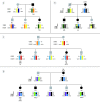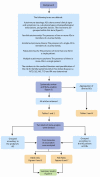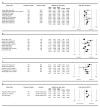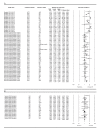How do autoimmune diseases cluster in families? A systematic review and meta-analysis
- PMID: 23497011
- PMCID: PMC3655934
- DOI: 10.1186/1741-7015-11-73
How do autoimmune diseases cluster in families? A systematic review and meta-analysis
Abstract
Background: A primary characteristic of complex genetic diseases is that affected individuals tend to cluster in families (that is, familial aggregation). Aggregation of the same autoimmune condition, also referred to as familial autoimmune disease, has been extensively evaluated. However, aggregation of diverse autoimmune diseases, also known as familial autoimmunity, has been overlooked. Therefore, a systematic review and meta-analysis were performed aimed at gathering evidence about this topic.
Methods: Familial autoimmunity was investigated in five major autoimmune diseases, namely, rheumatoid arthritis, systemic lupus erythematosus, autoimmune thyroid disease, multiple sclerosis and type 1 diabetes mellitus. Preferred Reporting Items for Systematic Reviews and Meta-Analysis (PRISMA) guidelines were followed. Articles were searched in Pubmed and Embase databases.
Results: Out of a total of 61 articles, 44 were selected for final analysis. Familial autoimmunity was found in all the autoimmune diseases investigated. Aggregation of autoimmune thyroid disease, followed by systemic lupus erythematosus and rheumatoid arthritis, was the most encountered.
Conclusions: Familial autoimmunity is a frequently seen condition. Further study of familial autoimmunity will help to decipher the common mechanisms of autoimmunity.
Figures








References
-
- Anaya JM, Shoenfeld Y, Correa PA, García-Carrasco M, Cervera R. Autoinmunidad y Enfermedad Autoinmune. Medellín: CIB; 2005.
Publication types
MeSH terms
LinkOut - more resources
Full Text Sources
Other Literature Sources
Medical

